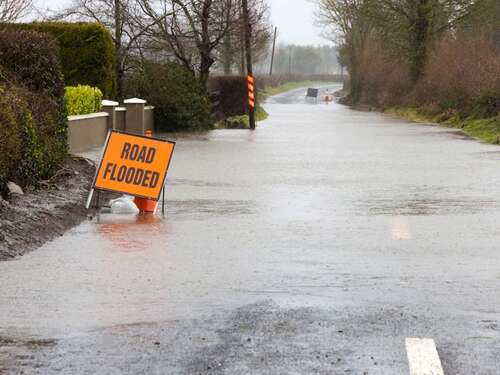
Prof Conor Murphy from Maynooth University called for greater emphasis on climate adaptation measures to mitigate extreme weather risks.
As Storm Babet brings knee-high flooding to Cork, causing major damage and disruption in many parts of the county, new research reveals clear signs of human-induced climate change in Ireland and highlights the need for increased climate adaptation measures, particularly as regards flooding and other extreme weather events.
Peak tide in Midleton passed at 9:30 am this morning reducing the risk of further flooding in Midleton Town Centre. A traffic management operation remains in place with Community Welfare Officers on site in Midleton all day today and 10am to 12 noon tomorrow. pic.twitter.com/4GhzzefCLr
— Cork County Council (@Corkcoco) October 20, 2023
A research team at the Irish Climate Analysis and Research Unit (Icarus) in Maynooth University have published a paper in the scientific journal Weather and Climate Extremes in which they have analysed Irish temperature and rainfall records for the industrial era (with some records dating back to 1850) and compared this data with global temperature and rainfall fluctuations.
The researchers argue that detecting signs of humanity’s role in the climate crisis is “critical for public communication and informing robust adaptation responses”.
The analysis reveals that the annual average temperature in Ireland is the “strongest indicator of human-induced climate change”.
They found that Ireland as a whole is warming at a rate of 0.88 degrees Celsius for every 1 degree Celsius of global warming and the current average yearly temperatures are what they classify as “unfamiliar” relative to the country’s early industrial climate.
The east and midlands of the country are warming up the most, with Dublin’s Phoenix Park warming the fastest at a rate of 1.14 degrees Celsius for every 1 degree Celsius in global warming.
Rainfall intensity increases flooding
As for rainfall, the researchers found that weather stations across the country are recording “substantial increases in winter rainfall per degree of global warming”. They warn that this indicates an increased flood risk.
Significantly, one third of the 30 weather stations showed an increase in rainfall intensity which is a leading cause of flooding, particularly in urban areas. The researchers classify this activity as “unusual” when compared to the early industrial climate.
Overall, of the 903 climate indicators the researchers analysed, 37pc showed results that can be classified as at least “unusual” relative to early records.
Conor Murphy is a professor in the Department of Geography at Maynooth University and lead author of the study. He says this analysis provides “a new tool that allows local-scale changes in climate to be scaled to global mean surface temperature, providing insight into how past, and importantly future changes, at the global scale relate to Ireland”.
The floods in Cork, which have caused particularly catastrophic damage in Midleton town, were the result of a month’s worth of rainfall (almost 120mm) coming down in a 24-hour period, with further warnings in place today (20 October).
Recent data from the EU Copernicus Climate Change Service revealed that September 2023 was the warmest on record globally and it is predicted that 2023 will be the warmest year on record.
The increase in global temperatures brings it with an increased risk of flooding and other extreme weather events.
As Murphy highlighted in relation to this new research: “These results clearly tell us that adaptation to the impacts of climate change needs to be given greater emphasis in national and local climate policy.
“Climate change is here and it is evident in our weather observations.”
10 things you need to know direct to your inbox every weekday. Sign up for the Daily Brief, Silicon Republic’s digest of essential sci-tech news.

